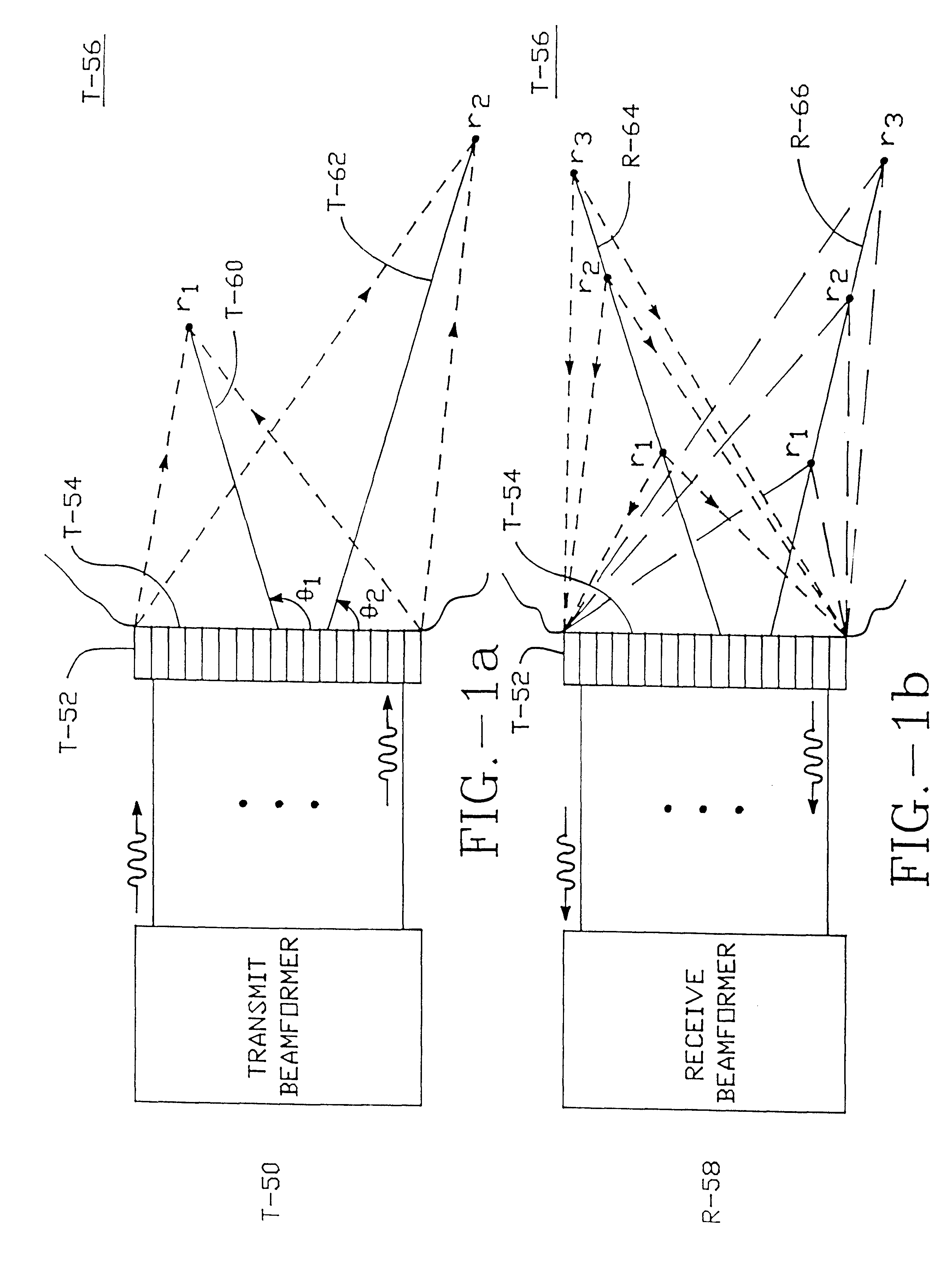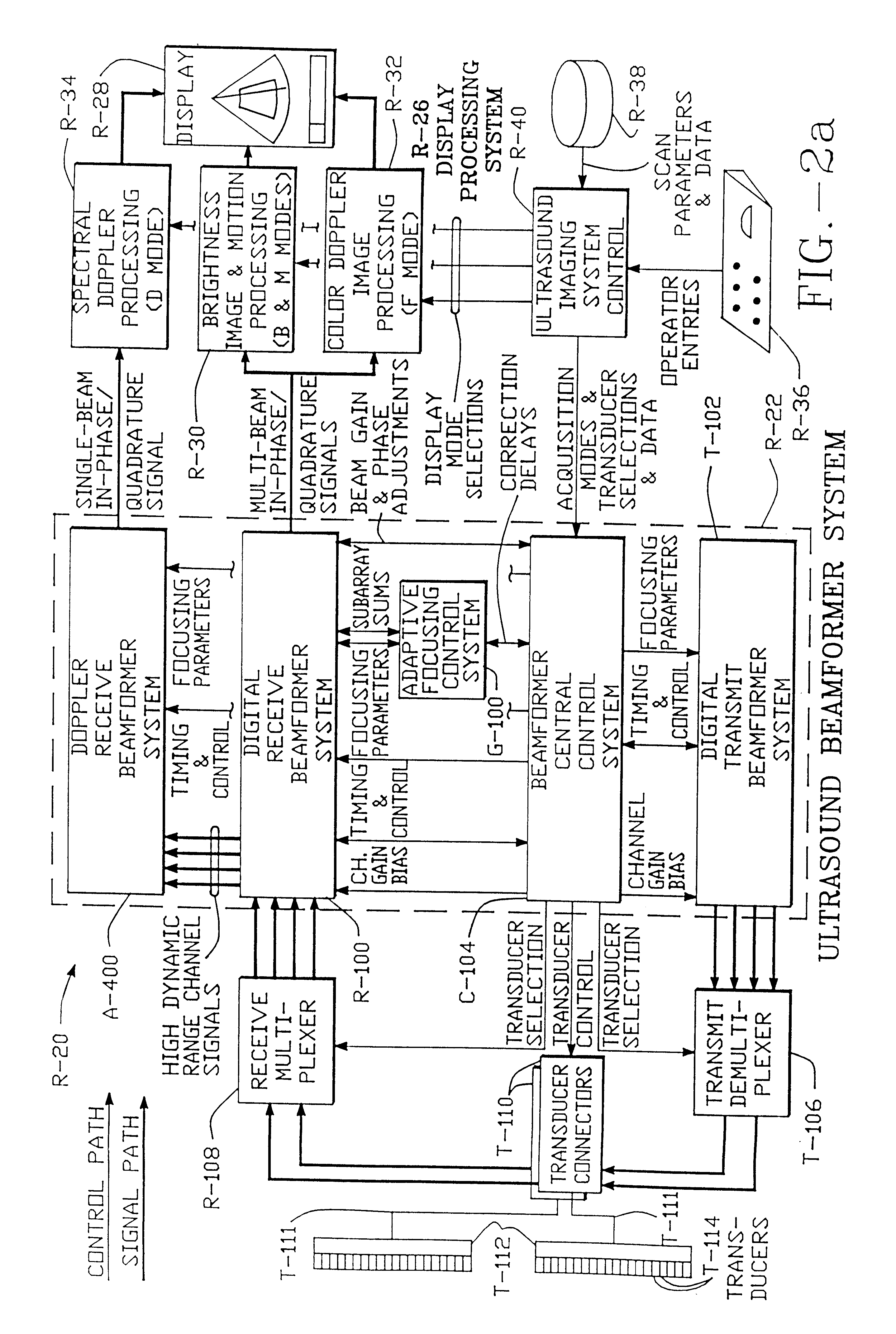Method and apparatus for transmit beamformer system
a beamformer and transmit beam technology, applied in the field of coherent imaging systems, can solve the problems of undetectable transientity, and inability to achieve optimal transmission,
- Summary
- Abstract
- Description
- Claims
- Application Information
AI Technical Summary
Benefits of technology
Problems solved by technology
Method used
Image
Examples
Embodiment Construction
1. Digital Multichannel Transmit Processor Digital Signal Processing
In the preferred embodiment, the transmit beamformer T102 includes a substantially independent waveform generating processor for each transmit element. Transmit processors T104 are referred to herein as multichannel processors because each of the individual transmit processors can provide multiple, programmable complex envelope waveform generation. A substantially continuous range of imaging frequencies is supported.
Overall, each transmit processor performs the primary functions of (1) waveform shaping of one or more waveforms for one or more beams, (2) apodization, and (3) insertion of steering / focusing time delays for such waveforms. To perform waveform shaping for a PW transmission, the signal path begins with initial waveform samples at a rate R.sub.E below that of the DAC T121 sampling frequency F.sub.s. The initial waveform samples can have a frequency spectrum centered at 0 Hz, or can be offset from 0 Hz. Wav...
PUM
| Property | Measurement | Unit |
|---|---|---|
| frequencies | aaaaa | aaaaa |
| frequency spectrum | aaaaa | aaaaa |
| frequencies | aaaaa | aaaaa |
Abstract
Description
Claims
Application Information
 Login to View More
Login to View More - R&D
- Intellectual Property
- Life Sciences
- Materials
- Tech Scout
- Unparalleled Data Quality
- Higher Quality Content
- 60% Fewer Hallucinations
Browse by: Latest US Patents, China's latest patents, Technical Efficacy Thesaurus, Application Domain, Technology Topic, Popular Technical Reports.
© 2025 PatSnap. All rights reserved.Legal|Privacy policy|Modern Slavery Act Transparency Statement|Sitemap|About US| Contact US: help@patsnap.com



